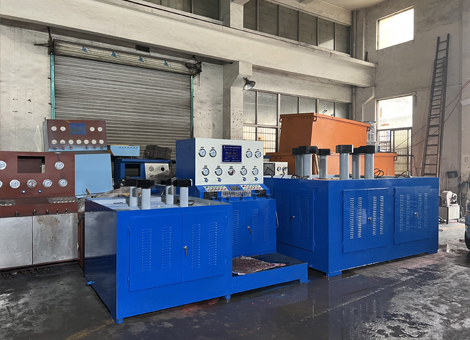Jul 25, 2025
The growing adoption of digital technology is redefining many industrial operations, and valve testing has proven to be an area where these innovations deliver tangible improvements. Incorporating digital monitoring into valve test benches has opened new opportunities to enhance measurement precision, streamline workflows, and build comprehensive records. Although traditional manual approaches still serve certain applications, the shift toward automated monitoring is offering organizations clearer insights into every phase of testing. This article explores the principles behind digital monitoring, outlines its advantages, and discusses important considerations for facilities planning to integrate these systems.

Understanding Digital Monitoring in Valve Test Benches
At its core, digital monitoring leverages an array of sensors, electronic controls, and software interfaces to capture and display real-time information about testing conditions. In contemporary valve test benches, dedicated sensors continuously measure variables such as pressure, flow rate, temperature, and time under load. These values are collected automatically and presented via digital displays or touchscreens for immediate reference.
In many configurations, operators can define target settings in advance, allowing the equipment to maintain specific conditions without constant manual adjustments. Should any parameter exceed its defined threshold, the system issues alerts or notifications to prompt timely action. Some designs also feature automated shutdown protocols that activate if critical limits are breached, adding another layer of protection for personnel and equipment.
Capturing and Managing Data More Effectively
A central benefit of digital monitoring lies in the way it transforms data collection and recordkeeping. Rather than depending on handwritten logs or manual data entry, test benches equipped with integrated logging record every relevant measurement throughout each cycle. Typical reports may include:Detailed valve identification and serial information;Pressure profiles and flow measurements;Duration and sequencing of test phases;Outcomes of sealing integrity and pressure resistance evaluations
Maintaining these structured records supports compliance with recognized standards, such as ISO 5208 or national regulations including GB/T 13927. In regulated industries, well-documented testing is often a prerequisite for customer validation and certification audits.
Additionally, a consistent archive of data provides a valuable reference point over time. For example, recurring trends in leakage rates or pressure fluctuations can be identified more readily when historical results are easily accessible for comparison.
Strengthening Accuracy and Repeatability
Variations in manual testing techniques can introduce inconsistencies that affect results. Digital monitoring minimizes such variability by applying pressure and capturing readings through calibrated, automated sensors rather than relying solely on operator judgment.
By continuously tracking key parameters, the system can detect subtle deviations and issue warnings early. This enables teams to address potential issues before they escalate, supporting a more predictable and uniform testing environment.
Repeatability also improves markedly. When multiple valves of the same model are assessed, digital monitoring ensures each one undergoes identical testing conditions, simplifying the task of verifying conformance to specifications and identifying any anomalies.
Advancing Safety Through Real-Time Oversight
Working with high-pressure equipment always presents inherent risks. Digital monitoring contributes to a safer testing environment by delivering continuous visibility into the system’s status. If readings exceed established limits, alarms sound immediately, and in many cases, automated shutdown procedures are triggered to prevent further escalation.
Some valve test benches also incorporate interlocking mechanisms that inhibit test sequences unless connections and clamps are properly engaged. These safety interlocks reduce the chance of accidents caused by incomplete setups or oversight during preparation.
Beyond automated safeguards, the clarity of real-time displays empowers operators to make informed decisions as conditions evolve, rather than reacting only after an issue has occurred.
Key Factors for Successful Implementation
Realizing the benefits of digital monitoring requires thoughtful preparation and training. Facilities should start by assessing whether current equipment supports digital integration or whether replacement may be more practical. In some instances, retrofitting existing benches with sensors and monitoring software is feasible; in others, a complete upgrade may be advisable.
Several criteria can guide equipment selection:Accuracy and calibration requirements of the sensors;Compatibility with different valve types and dimensions;Usability of the software interface;Data export functions and report generation capabilities;Availability of technical support and maintenance services.
Operator readiness is equally critical. Even sophisticated systems depend on informed users who can set parameters, interpret alerts, and validate results. Structured training and periodic refresher sessions strengthen confidence and reduce the likelihood of procedural errors.
Transforming Daily Operations
After digital monitoring systems are deployed, many organizations observe improvements in efficiency and consistency. With test parameters stored electronically, preparation for repeat procedures becomes quicker, while automated data capture reduces reliance on manual paperwork.
Over time, robust records and transparent processes can simplify compliance activities and strengthen trust with customers and auditors. When clients request evidence of testing, comprehensive digital documentation can be presented promptly, demonstrating a commitment to quality and accountability.